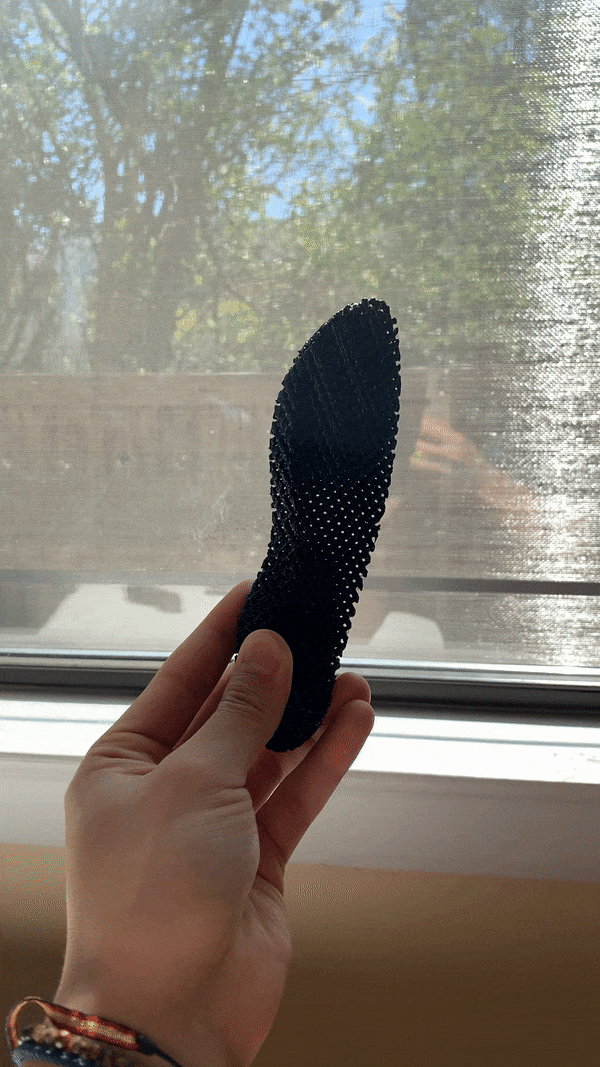top of page

TPMS EXPLORATION:
CUSHIONING PORES
TPMS EXPLORATION:
CUSHIONING PORES
Triply Periodic Minimal Surface
A -minimal surface- is characterized by
the minimal area within a given boundaries.
These shapes are found in nature from an equilibrium of homogeneous tension
Minimal surfaces that are -triply periodic- repeat in three-dimensions and
are considered crystalline structures
Gyroid Surface Construction

Fundamental region
Surface patch
Cubic unit cell

Source: Sam Whitehead
Assembly of batwing surface

While experimenting with different TPMS geometries, I noticed that rays of light would flow through the entire structure, exposing patterns of open spaces distributed within the entire model
Upon closer inspection, light is shown to travel
across the midsole both laterally and axially,
revealing that the inner channels
do not run unidirectionally but actually
form a three-dimensional porous grid
that varies in both shape and arrangement
with respect to the chosen geometry













I had gotten two miniature midsole models printed through friends at Hydra Research to physically inspect
the nature of these patterned pores.
While the parts had been too stiff to observe any significant deformation, their shadows had clearly displayed the presence of open internal channels


The first model implemented a 'Diamond' TPMS geometry




The second model implemented a 'Neovius' TPMS geometry




While the pores of the Neovius run perpendicular to the overall structure and are arranged as rectangular cross hairs, those of the Diamond travel through on an angle as equally spaced circles




As foam naturally contains a multitude of air pockets, the pores of these TPMS geometries could offer a stable, foam-like form of cushioning for runners. The open spaces could handle impact from all angles and provide the added benefit of reduced weight
bottom of page